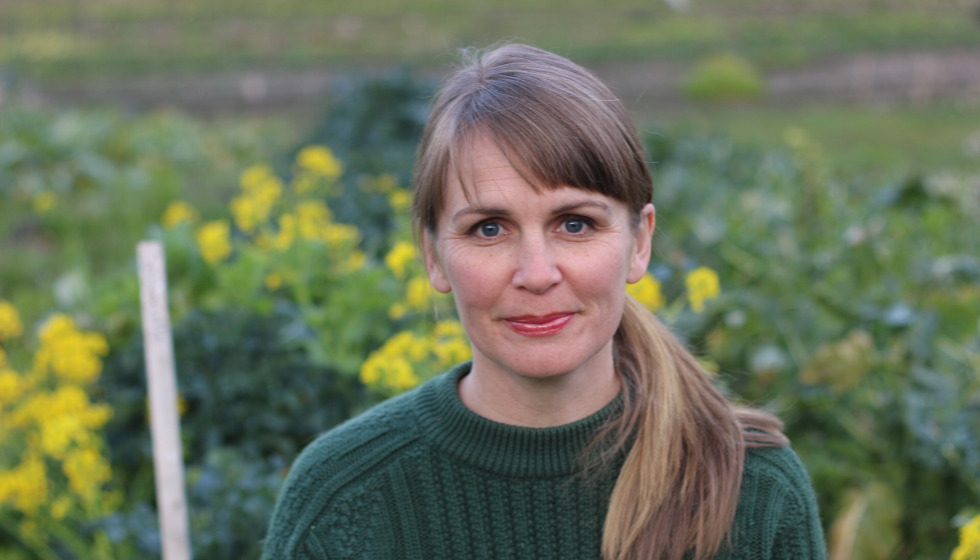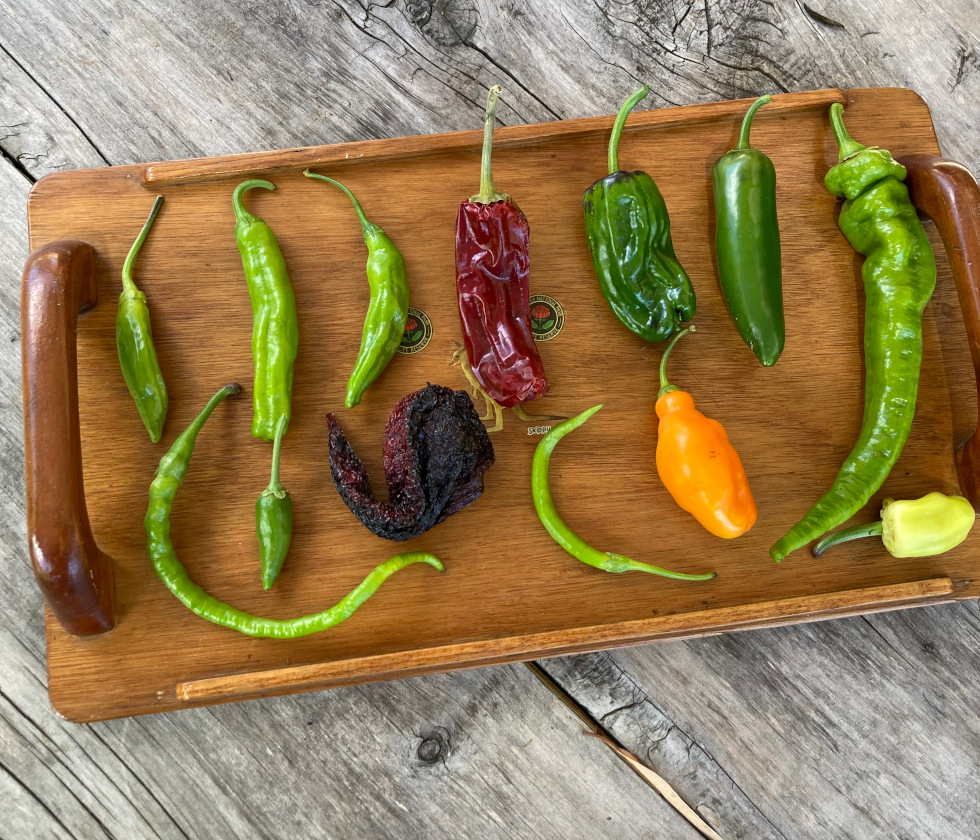A Spicy Love Story
by Ollie Benson

Every plant tells an important story of cultural connection. Several stories in fact. And as Paulette Whitney of Provenance Growers explains, it is these stories that “make you stop. They make you taste the food”.
For years Paulette’s own storytelling has garnered a large local and online following of growers and eaters. Together with partner Matt they have been stalwarts at Salamanca Market, selling plants, preserves and fresh vegetables, while supplying Hobart eateries such as Aloft, Dier Makr, and Tom McHugos. It has also led her to write a book, Broccoli and Other Love Stories: Notes and recipes from an always curious, often hungry kitchen gardener, which will be published in July this year.
When I first arrived at Paulette and Matt’s home in Neika, on the slopes of kunanyi/ Mt Wellington, she immediately launched into a story of the Beaver Dam pepper, a hot and flavourful chilli that’s great for hot sauces or eating fresh. The story goes that seeds were brought to Beaver Dam in Wisconsin from Hungary in the early 1900s by Joe Hussli, an immigrant who wanted to bring a taste of home with him. Later, as we sat down to chat, Paulette produced a wooden platter of the main varieties she has been growing this year. Among them was the beautiful looking, and rather fierce Chao Tian Jiao, hailing from the Sichuan province of China. This chilli is also known as Facing Heaven because the chillies point to the sky as they grow.
Next up was the story of the sweet Antohoi Romanian pepper. Jan Antohi was a Romanian circus performer who defected in the 80s. Having made his home in the US, he returned to Romania to visit his mother after the collapse of the Soviet Union and brought back seeds of the peppers his mother used in her cooking.

Paulette was quick to point out the story before the stories she recounts. All peppers, or chillies, are part of the Capsicum genus and are native to South and Central America. As one of the oldest cultivated crops, the stories of the Beaver Dam, Antohoi Romanian and Facing Heaven peppers stretch back much further than modern day Wisconsin, the circuses of Romania, or Sichuan cuisine, and long before the arrival of Columbus in the Americas, with archaeological records indicating that capsicums were consumed in the Andean regions of Peru and in Mexico from at least 8600–5600 BC.
Each plant also carries a personal story. From the foraged railway line plums to the Leicester Jones tomatoes, bred by a Tasmanian naturopath, that Paulette stubbornly grows each year for their unique pink fruit, despite often splitting on the vine, the intimate connection she has to plants provides daily joy. James De Costa, a fellow market gardener and good friend, once recommended she tried growing a sweet capsicum called Jimmy Nardello. She now thinks of ‘DC’ each time she harvests them.
So, of course, the story of this article (aside from stories!) is that this month, we are hitting chilli and capsicum season. For Provenance Growers, this means Padrons and Shishitos will be fried as an accompaniment to cold beer, Basque Espelletes are ripening ready to be dried and ground, Jalapenos are being pickled, and the perennial Rocoto harvested for new season hot sauce.
Paulette’s passion for plants, which at this time of year is particularly focused on the huge variety of chillies and capsicums she grows, is the ultimate story of love.
PAULETTE’S PICKLED JALAPENOS
Paulette loves these on tacos, in salads, salsas and atop eggs on toast. She warns that the heat from jalapenos, and other peppers, can change through the season, so be sure to label each batch you make, lest you accidentally frighten the kids with some super-spicy late-season heat.
The flavourings are entirely up to you, so use what you have at hand – if the coriander is bolting to seed use those, if there’s plump garlic on the kitchen bench add extra, or if there’s honey nearby swap out the sugar – the tastiest accidents happen this way. You’ll need sterilised jars. They last for a few months in the fridge – use any opened jars within a couple of weeks.

Ingredients:
500g jalapenos
A clove of garlic, peeled and halved for each jar
For each jar, one or two oak, grape or blackcurrant leaves (their tannins keep your pickles crisp)
1 cup apple cider vinegar
1 cup water
1 tablespoons sugar
2 teaspoons sea salt
1/2 teaspoon whole black peppercorns
1 teaspoon whole coriander seeds
Optional extras – bay leaves, cumin seeds or hot chilli flakes if your jalapenos are mild and you want an extra kick.
Method: Wash and slice the jalapenos into 2mm discs. Pack them tightly into jars, tucking in the oak or vine leaves as you go. Put the brine ingredients into a saucepan and heat, stirring to dissolve the sugar and salt. Remove from the heat just before it boils and pour the hot solution over the jalapenos. Tap each jar on the bench to remove any air pockets, seal immediately and store in the fridge when cool.

